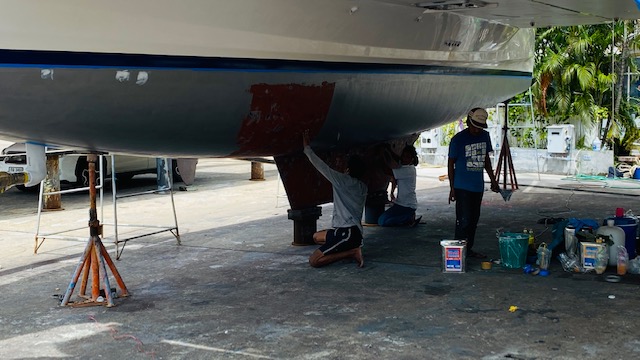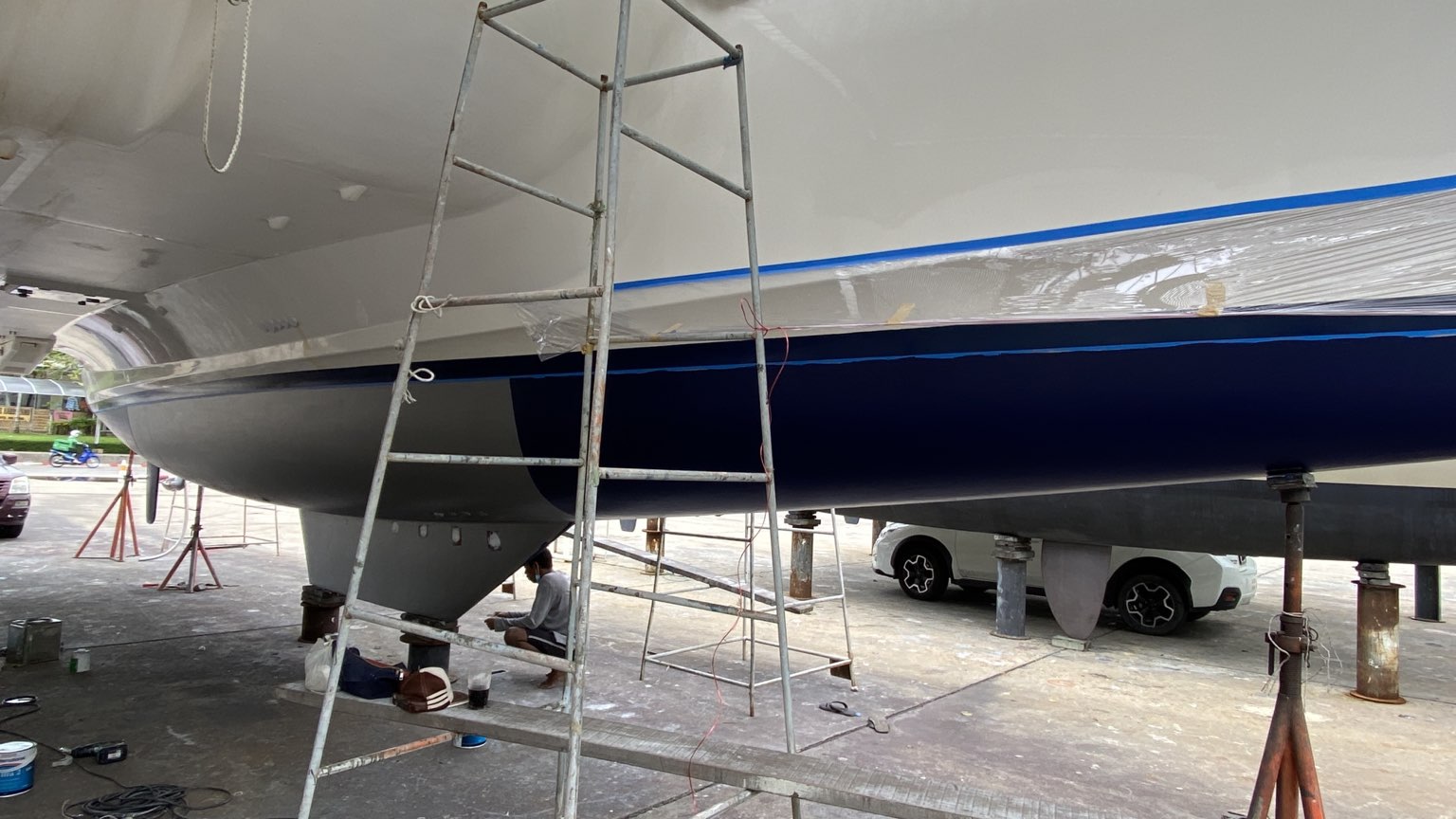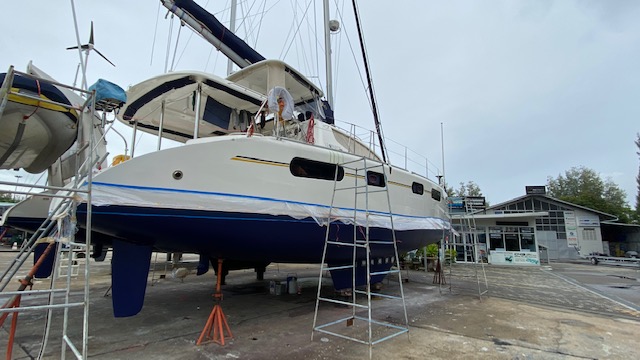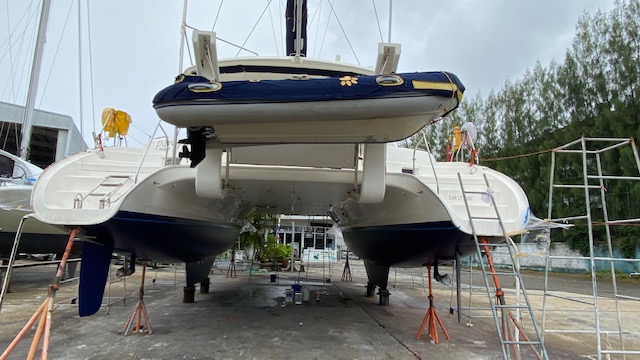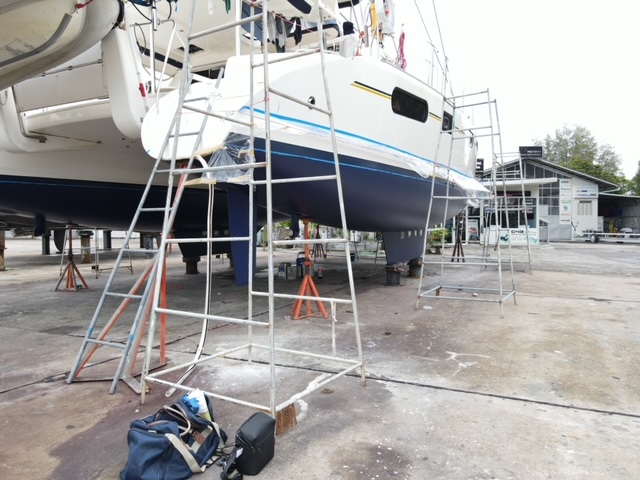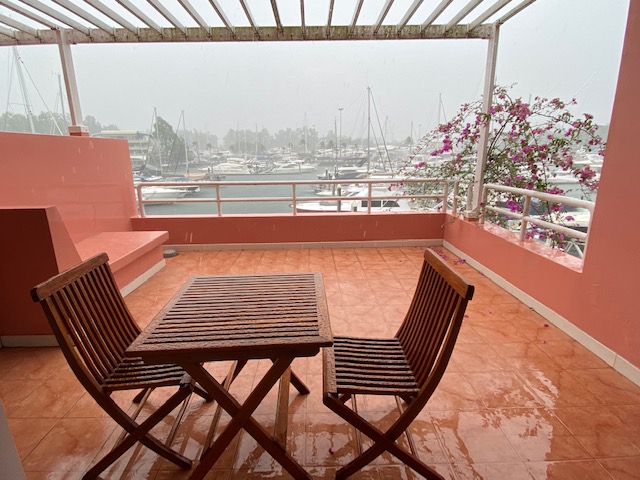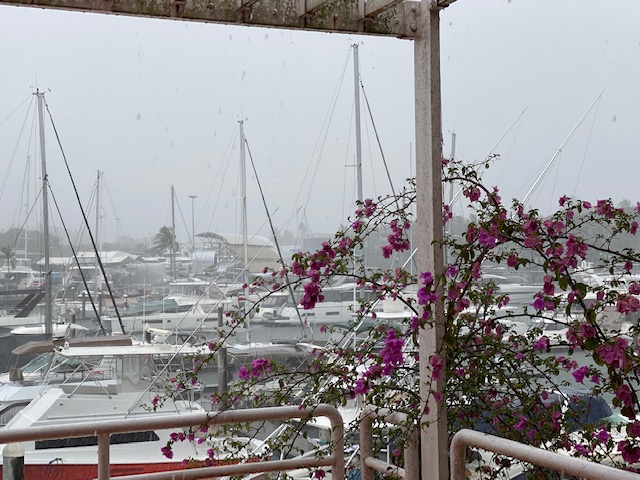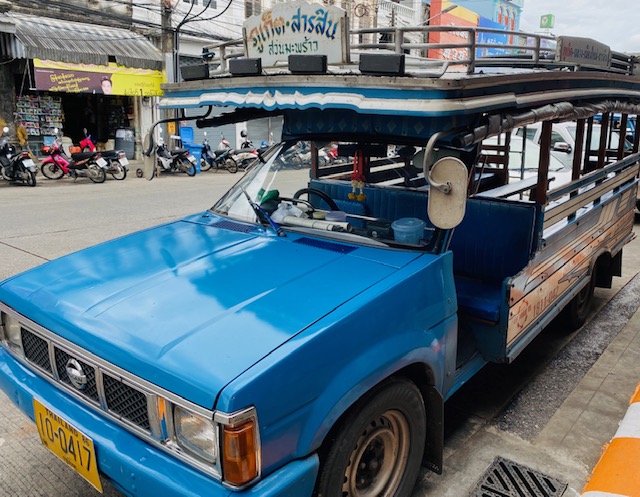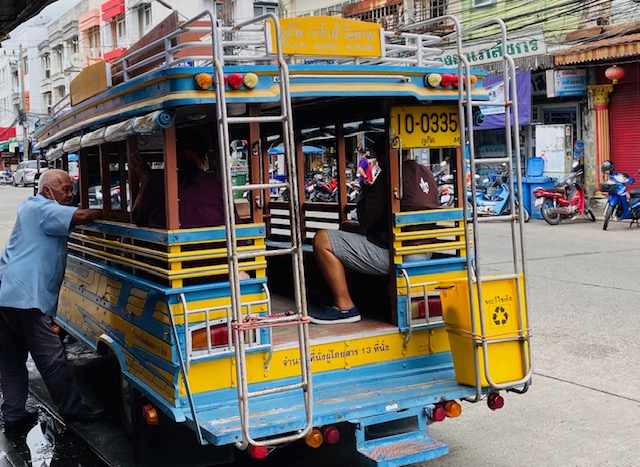However, Mother Nature brought plenty of wind and rain this afternoon, a fallout of the hurricane expected to develop in the Bay of Bengal, forcing the workers to erect plastic around Paw Paw to protect the antifouling until it had dried. It seems, regardless of which hemisphere we are in, when our antifouling reaches end-of-life around April / May timeframe, we have to contend with rain when we’re on the hard; this is now the third such occurrence, after weeks of sweltering sunshine.
Roy also undertook a few tasks on Paw Paw this morning before the workmen arrived, including permanently wiring up our spare windlass controller, cleaning the bridle, replacing the seat on Elaine’s head (aka toilet) and refurbishing her old seat for his head. Unfortunately the plastic replacements Roy had purchased in Malaysia for his head, were very poor quality and the chandlery here only had one coated wooden seat in stock.
While out and about around the marina and boatyard, though, we noticed a rather unusual looking little truck during our first week here, which was being used to collect the garbage. However, it wasn’t until our outing in Old Town Phuket yesterday, that we noticed a few more of these, but brightly coloured and carry passengers; a wonderful reminder of the “buses” in American Samoa and Samoa. Then during our tour around the Thai Hua Museum, we noticed a historical reference to these “trucks” and that sent Elaine on another research mission.
On Phuket Island, the “songthaews”, as they are called in Thai or “Po Tongs” in Hokkien Chinese, meaning “two rows”, are named as such because of the fixed benches along the sides of a converted pick-up truck or lorry on which passengers sit. In some vehicles a third bench is put down the middle of the seating area. A roof is fitted over the rear of the vehicle, to which curtains and plastic sheeting is attached to keep the rain out and some have roofs high enough to accommodate standing passengers, but, more typically, standing passengers occupy a platform attached to the rear.
In other parts of Thailand, like Chiang Mai, locals call these vehicles “rot si daeng” or “rot daeng” which literally means "car red"; a reference to the most common coloured paint used to decorate the “songthaews”.
Not only are they a cheap and convenient way to travel, they can be a lot of fun, similar to our experiences in the South Pacific. Besides their cheerful appearances with the bright colours of paint used, they provide a great opportunity to enjoy the scenery, you get plenty of the fresh air and you obtain a wonderful insight into local life. As we learnt, however, you definitely cannot be in a hurry to get somewhere and use this mode of transportation because, along the route, besides picking up other passengers going in the same direction, the driver will almost always stop to pick up a friend or a relative or goods requiring delivery. In Samoa we happen to hop on one that had a number of villagers doing their Saturday morning shopping before returning home, the latter our destination. Unfortunately with COVID-19 it is too risky for us to enjoy an outing on one of these, but hopefully soon, if we all get vaccinated as planned.
The history of these iconic “buses” on Phuket Island date back to 1947 - 1967, when a large number of Phuketians experienced significant increases in their incomes as a result of the island’s tin mining industry, and as a result, out went the animal drawn carts and in came motorised vehicles.
There were a number of obstacles, however, in that the infrastructure was inadequate for the new modes of transportation, resulting in Kosimby Na Ranong, the Governor of Phuket at the time, asking for assistance from the tin mining businesses to help develop the roads. This also created the opportunity for shipments coming from Penang to be brought to Phuket by medium sized trucks, the vehicle which was then subsequently modified to create the “songthaews”.
